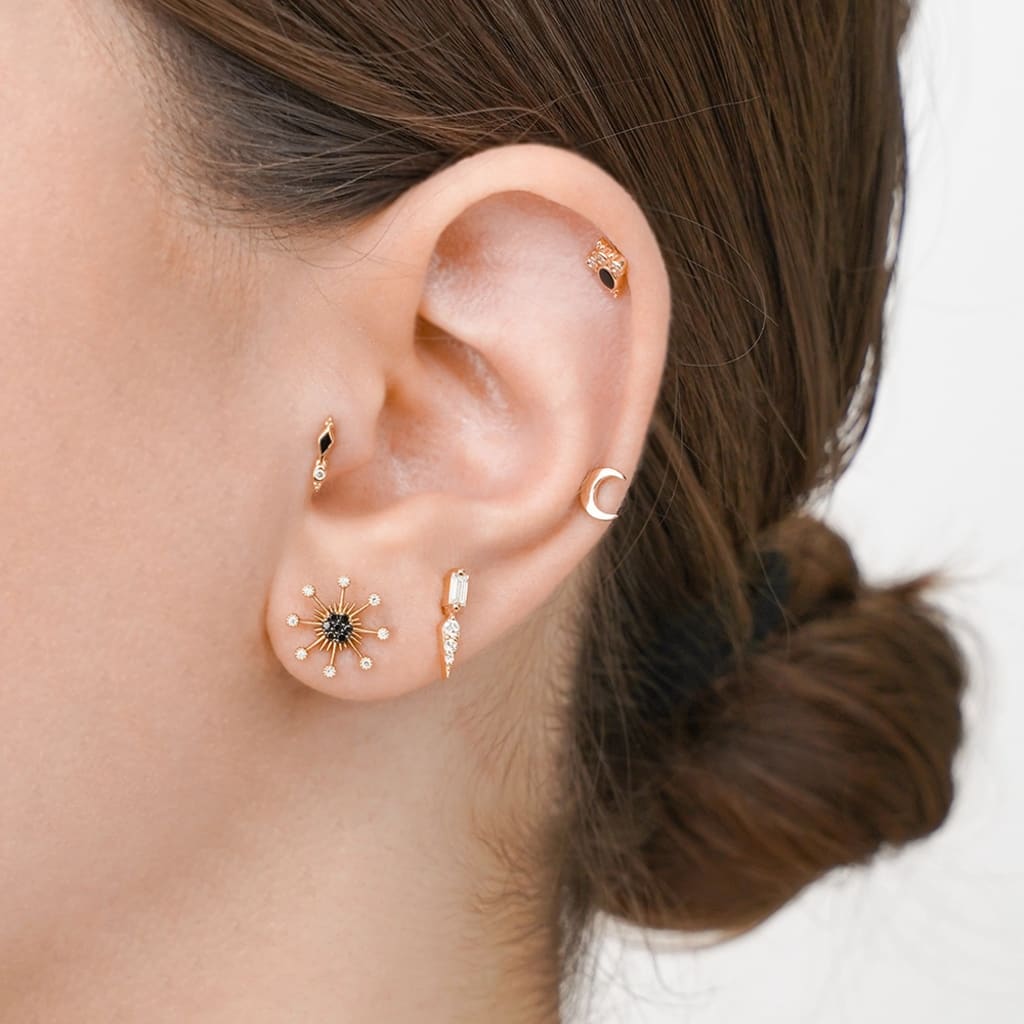Getting an ear piercing is a popular form of self-expression and adornment. One of the most common concerns people have before getting their ears pierced is the pain level involved. The sensation experienced during Ear piercing Dubai varies from person to person, largely depending on individual pain tolerance and the specific location of the piercing on the ear.
The typical feeling during a piercing is often described as a quick, sharp pinch. This brief discomfort is usually over within seconds. Earlobe piercings tend to cause less pain compared to cartilage piercings because the earlobe is fleshy and contains fewer nerve endings. Cartilage piercings, on the other hand, can feel more intense due to the firmer tissue and denser nerves.
It is important to mentally prepare for the procedure by understanding that the pain is temporary and mild for most people. Relaxing and staying calm can help reduce anxiety, which often amplifies the perception of pain. Deep breathing before and during the piercing can ease tension and make the experience more manageable.
Healing Process of Ear Piercing
The healing of an ear piercing is a critical phase that requires attention and care to ensure proper recovery. Healing times can vary depending on the piercing location and how well the piercing is cared for during this period.
Earlobe piercings generally heal faster than cartilage piercings because of the softer tissue and better blood supply. Usually, earlobe piercings can take about six to eight weeks to heal fully. Cartilage piercings, however, might take several months, sometimes up to a year, to heal completely.
During the healing process, the body works to close the wound created by the piercing by forming new tissue around the earring. It is normal to experience mild swelling, redness, and tenderness in the first few days after piercing. These symptoms gradually decrease as healing progresses.
Proper hygiene is vital to prevent infections and promote healing. The area around the piercing should be kept clean and free from dirt or irritants. It is important to avoid unnecessary touching or twisting of the earring, which can delay healing and cause discomfort.

Factors Influencing Healing Time
Several factors influence how quickly and effectively an ear piercing heals. Personal health, immune system strength, and aftercare routines play significant roles. Good nutrition and staying hydrated can support the body’s natural healing mechanisms.
Piercing location is another crucial factor. Earlobes have more blood flow and softer tissue, which facilitates faster healing. Cartilage, being denser and less vascularized, takes longer to heal and is more susceptible to irritation from pressure or trauma.
Sleeping positions can affect healing too. Avoiding sleeping on the pierced side reduces pressure and friction, which can otherwise cause prolonged tenderness or swelling.
Wearing appropriate jewelry that fits well and is made of suitable materials can minimize irritation and support healing. Jewelry that is too tight or heavy can impede the healing process and cause discomfort.
Essential Care During Healing
Proper care is essential for a smooth healing process and to maintain the piercing’s appearance. Although not all aftercare methods are suitable for everyone, some general practices can help ensure good results.
Keeping the piercing clean is paramount. Gently cleansing the area with a mild, non-irritating solution helps remove debris and reduces the risk of infection. Avoid harsh chemicals or anything that can cause dryness or irritation.
It is important to avoid applying unnecessary substances to the piercing site. While tempting, using creams or ointments without proper guidance might interfere with healing or cause reactions.
Hands should always be clean before touching or cleaning the piercing. Touching with dirty hands can introduce bacteria and cause infections.
Jewelry should be rotated gently only if recommended, as excessive movement can irritate the piercing and delay healing.
Managing Discomfort and Sensitivity
Mild discomfort and sensitivity around the pierced area are common, especially during the first few days. Managing this discomfort helps make the healing process more comfortable.
Applying a cool compress can help reduce swelling and soothe tenderness. Avoid using anything too cold directly on the skin, as extreme temperatures might cause more harm.
Avoid exposing the piercing to harsh environments such as excessive heat, humidity, or polluted areas, as these can irritate the skin and delay healing.
Wearing loose clothing and avoiding accessories that might catch or rub against the piercing can prevent unnecessary irritation.
Listening to the body's signals and avoiding activities that cause pain or discomfort around the piercing site supports better recovery.
Lifestyle Considerations During Healing
Adjusting certain lifestyle habits can contribute to better healing outcomes. Staying hydrated and eating a balanced diet with adequate vitamins and minerals supports the immune system.
Avoiding smoking and excessive alcohol consumption is beneficial, as these can impair the body's healing ability and increase the risk of complications.
Maintaining good general hygiene and avoiding swimming in pools, hot tubs, or natural bodies of water during the early healing phase is advisable, as these environments can harbor bacteria that might infect the piercing.
Physical activities that cause excessive sweating or expose the piercing to dirt should be done with caution. If sweating occurs, gently cleaning the area afterward can help prevent irritation.
Recognizing Normal Healing Progress
Understanding what to expect during the healing process can help reduce anxiety and allow proper care. Normal healing includes gradual reduction of redness and swelling, minimal tenderness, and the skin around the Ear piercing in Dubai appearing healthy and not overly dry or flaky.
Occasional mild itching may occur as the skin repairs itself. This sensation should not be severe or accompanied by other symptoms like excessive pain or discharge.
Jewelry may feel loose as swelling subsides, but it should not be forced out or removed prematurely. Allowing the body to fully heal around the piercing is essential before changing jewelry.
